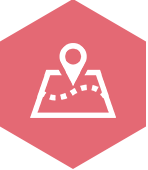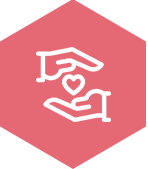
Drones can be used to survey roofs quickly, safely, and accurately while decreasing the expense of calculating or measuring the rooftops. This makes it possible to obtain useful information that, depending on the business, can be applied to a variety of reasons.
Drones can greatly assist in overcoming the difficulties posed by rooflines, which are growing more complex and challenging to manually negotiate using conventional methods. Today, a sizable portion of construction experts use UAVs to inspect buildings and evaluate the condition of the property for purposes such as maintenance, repairs, measurement taking, details, and other uses.
However, UAVs are not just limited to construction, building, or roof inspection companies and may be used in a variety of industries. For instance, insurance companies can use drones to assess roofs, while marketers can utilize aerial photos to promote the properties they are selling.
Drones are a preferred tool for roof inspections for a variety of reasons. These advantages include cost savings, increased inspection speed, safety, and better data compared to employing manual techniques.
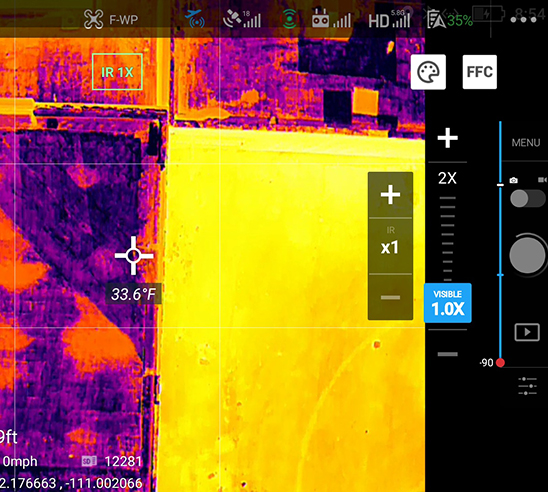
Building experts or contractors can deploy specialized or off-the-shelf drones along with the relevant software for a typical roof inspection. A simple drone-based examination typically goes through the phases listed below.
• The flight plan is created on the app by the estimator, operator, or pilot. Defining the roof’s perimeter comes after identifying the building’s address, which can be done on-site or in the office.
• The pilot launches and controls the drone using the controller or a mobile phone app once the plan is prepared and everything is verified to be in order.
• Depending on the sensors and the intended use, the drone automatically follows the flight route while collecting photographs and any other data.
• After about ten minutes, the drone will autonomously land in accordance with the program and send the data to the mobile device or any other designated destination.
The automatic discovery of flaws that a human eye is likely to miss is made possible by the addition of AI and other software tools. Additionally, a variety of imaging and analysis technologies are available that enable the creation of 3D models and the generation of numerous useful reports for maintenance, bidding, insurance evaluations, marketing, and other purposes.
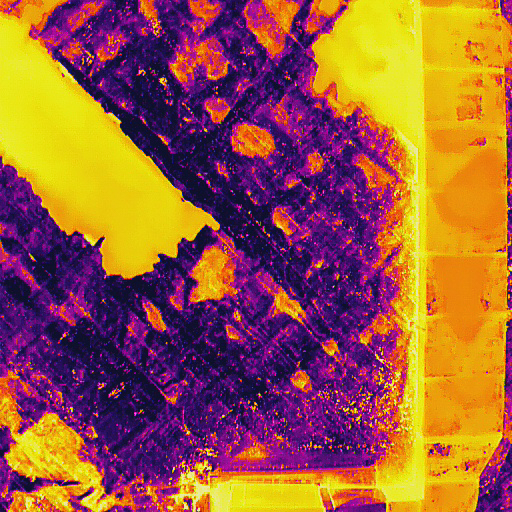
Unmanned aerial vehicles or systems operate remotely and don’t need a human worker to be present on the rooftop while doing inspections. The inspector will often operate the tool from a secure location on the ground as the UAV flies over the building, gathering photos, thermal imaging, and sometimes videos.
Drone utilization results in significant cost reductions for both the inspection business and the building owner.
The following are some of the factors that make drones a desirable technology for those seeking quick, safe, and affordable inspection options.
Decreased inspection time
Heavy access equipment does not need to be transported, put together, or set up for a drone examination. As a result, less time is needed to do the actual inspection following planning. A drone survey can also be planned considerably more quickly and easily than a conventional method.
It only takes 10 to 30 minutes to finish the inspection once it has started and to provide the findings to a central location. Depending on how complicated the roof is, a traditional procedure can require an entire day or perhaps more.
Drones make roof inspections quicker and easier, allowing businesses to do many, routine inspections.
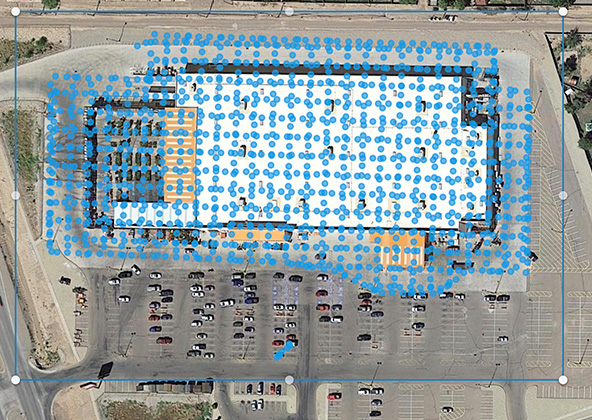
In many instances, drones can reduce the cost of inspections. It reduces the need for personnel, equipment, and time. Ladders and other bulky climbing and access tools are no longer required, which lowers both the hazards and the need to buy or rent them. As a result, there is no longer a need to insure the staff and the machinery.
Planning, organizing, and gathering the data from a roof would take hours or days using a manual manner. A drone, on the other hand, may accomplish the same task and do it even better in less time, at a cheaper cost, and with fewer dangers to one’s safety and health.
Substantially reduced threats to safety
When performing roof inspections manually, it is typically difficult, time-consuming, and dangerous. The complexity of the roof design and height of the building or structure both increase the difficulties. There are risks associated with roofing, using ladders and other access equipment, falling roofs, electrocution, becoming stuck in tight areas, etc.
On the other hand, a drone-based inspection does not require a real worker to be present at the inspection site. The operator or drone pilot inspects the roof from a secure distance in a normal roof evaluation.
Typically, all a drone needs to execute a simple examination is the proper sensors, like thermal, picture, and video cameras. There may also include other choices like GPS, gas detectors, and others.

Drones provide additional advantages over traditional inspection methods, such as the capacity to gather more thorough, accurate, and valuable data, in addition to lowering inspection time, hazards, and costs. They are therefore excellent resources for solar energy installers, building businesses, insurance providers, marketers, etc.
Additionally, businesses can employ a variety of technologies for analysis and to deliver useful information to stakeholders. To enable building management and insurance businesses to interact with other common applications, the majority of software packages can generate reports from the drone data in a format that is compatible with those programs. As a result, it is simpler to comprehend the inspection data and distribute it to the appropriate parties.
Drones provide for significantly faster inspection and result delivery, hence providing a quicker decision-making process.
Inspections that are precise and repeatable
It might be difficult to detect leaks, damaged insulation, and other roof flaws with the naked eye, especially if they are not readily apparent. However, equipping the drones with pertinent sensors, such as RGB and infrared cameras, can enable them detect the signs of a leak, deterioration of the insulation, and other roof flaws.
From the same location and orientation, drones are able to gather measurements and record photos or videos. This is typically a useful feature when it’s necessary to confirm or clarify a few minor things. This task takes a short amount of time.
When employing manual methods, which frequently require trial and error and are never guaranteed to correctly reproduce an activity that has already been accomplished, this is almost impossible. The difficulty increases when a different employee must complete the same task.
In order to compare before-and-after repair photographs or to explain specific points, the drones provide superior data, and operators can repeat the procedure with confidence.

Due to the numerous drawbacks and high costs of conventional inspection methods, the majority of building owners, insurance underwriters, maintenance businesses, and marketers do not have information about the condition of the roofs.
However, since they provide an extremely speedy assessment at lower prices, drones can close this gap. This makes it simpler for anyone to evaluate whenever they want without investing a lot of time or money.
The traditional approach typically calls for specialized abilities to conduct the inspection and obtain the necessary information. However, a person with average competence can do the examination from a secure distance without needing to scale the building.
Choosing which drones to use for the roof inspection
Drones having the capacity to maintain dependable and stable flights are required for roof inspections. When choosing a drone or assessing a provider’s quote, the following are the main elements to take into account:
Stability
a drone with stable flight: The drone should be able to survive the local weather, including moderate winds.
Capability of first-person view (FPV)
By doing this, the drone camera’s real-time images can be viewed by the pilot or controller. People can view real-time images from a drone equipped with PFV on their screens or with FPV goggles.
Built-in GPS capabilities
With the help of the GPS, controlling a drone is considerably simpler (GPS). The pilots can focus more on the roof inspection, camera positioning, and other crucial tasks by using the autonomous flight mode rather than trying to operate the UAV.
Sensors types and quality
In order to capture clearer and better photographs, high-quality cameras are essential. As a result, depending on the needed information, it’s crucial to choose a device with the appropriate thermal, image, and video cameras as well as other sensors.
Appropriate flying duration and range
More flight duration is possible with longer-lasting batteries. On average most commercial drones may last between 20 and 40 minutes. The longer the better, though, as it allows the gadget to complete the inspection without needing to be landed to recharge or swap the battery. Another aspect to think about is the charging time, particularly if there isn’t a spare battery available.
Range of flight
In addition to the amount of time, it is important to take into account a drone’s flight range, particularly when distant buildings need to be inspected. Flight range also eliminates the need to physically approach each facility, making it perfect for checking multiple structures at once, like a campus.
Conclusion
Professional roof inspections services using drones are safer, quicker, and less expensive. Additionally, they make it possible for the inspectors to gather a variety of correct data. The traditional manual techniques typically have a number of drawbacks, and businesses may steer clear of them because of the high prices, increased dangers, and time-consuming inspections.
However, the drones offer quicker and more affordable examinations, allowing the owner or builders to do more inspections.
Drones open up new opportunities and generate efficiencies in industries such as mining, oil & gas and other large industrial facilities. They have emerged as incredibly powerful, versatile industrial tools capable of completing a wide range of applications.

Many times roofers aren’t able to access the roof because of unsafe conditions. If they are able to access the roof, they can’t capture a quality image from their cell phone. If you don’t have a quality image, you can’t communicate the need accurately to your customer. High resolution aerial drone photos communicate even the smallest details.

By letting us flying our commercial drone around your property, you can provide future customers a better look at what their investment is for, along with all of the exterior features it provides. Nothing is as stunning as aerial photos and videos.
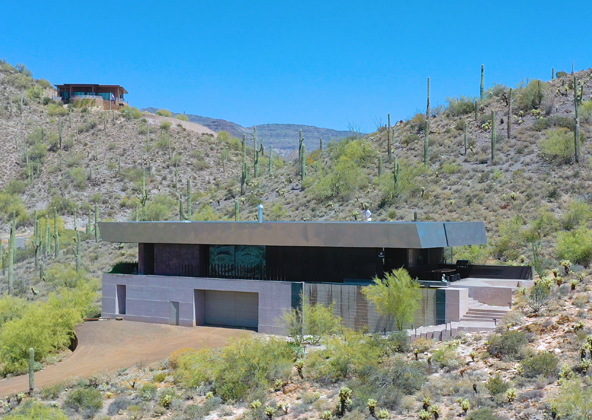


Drones open up new opportunities and generate efficiencies in industries such as mining, oil & gas and other large industrial facilities. They have emerged as incredibly powerful, versatile industrial tools capable of completing a wide range of applications.


By letting us flying our commercial drone around your property, you can provide future customers a better look at what their investment is for, along with all of the exterior features it provides. Nothing is as stunning as aerial photos and videos.

Many times roofers aren’t able to access the roof because of unsafe conditions. If they are able to access the roof, they can’t capture a quality image from their cell phone. If you don’t have a quality image, you can’t communicate the need accurately to your customer. High resolution aerial drone photos communicate even the smallest details.

